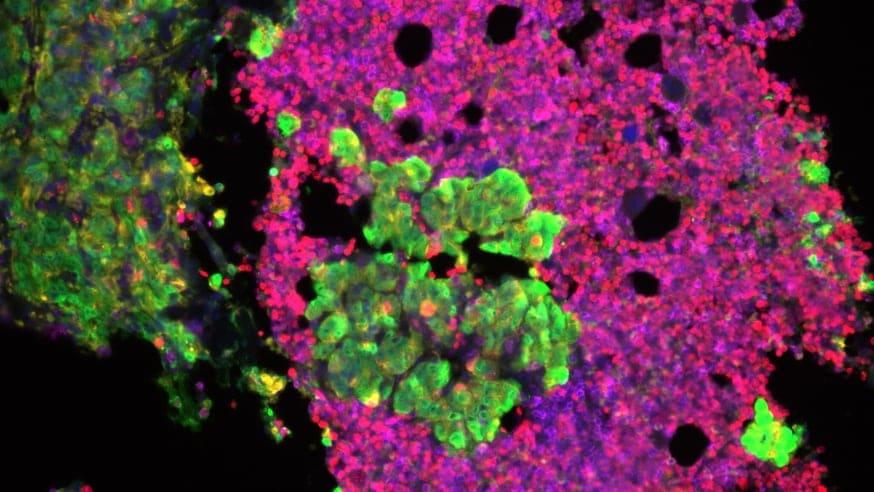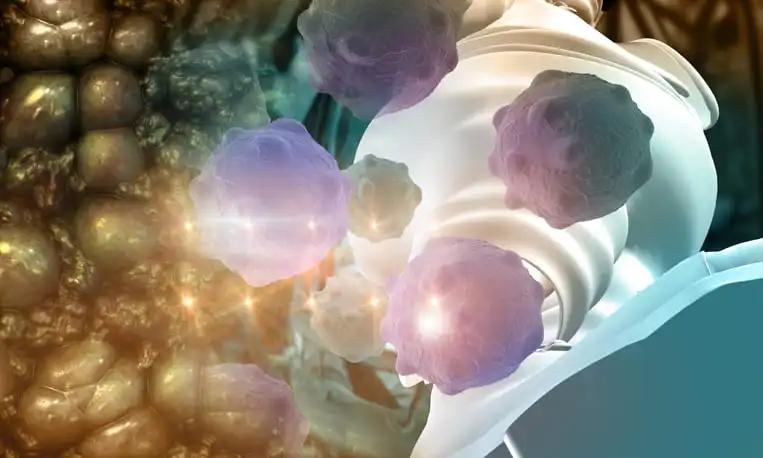KEY TAKEAWAYS
- The VISION phase II trial investigated whether specific biomarkers can guide treatment decisions and improve outcomes for METex14 NSCLC patients.
- The result demonstrated a good response with high minimal residual disease, negative prognostic significance with TP53 mutation, and resistance clues like new MET mutations and alternative pathways.
Tepotinib, a targeted therapy, has shown powerful and sustained results in treating non-small cell lung cancer(NSCLC) patients with METex14 mutations. For the study, researchers aimed to investigate whether specific biomarkers can be used to guide treatment decisions and improve outcomes for METex14 NSCLC patients.
The study assessed baseline, on-treatment, and/or end-of-treatment(EOT) liquid biopsies using ctDNA NGS (Guardant360®) or ELISA for shed MET(sMET) and hepatocyte growth factor (HGF). Associations of baseline and on-treatment biomarkers with outcomes were examined, and acquired resistance was explored in post-progression EOT samples. The analyses were exploratory.
Baseline HGF and sMET data were available for 233 and 245 patients, respectively, showing similarity across treatment lines, race, and age. High baseline HGF (>upper quartile [1.67 ng/mL], n=58) versus low HGF (≤upper quartile, n=175) was associated with numerically shorter median duration of response (mDOR) (13.4 [95% CI: 6.6, ne] vs 19.4 [10.8, ne] months) and median progression-free survival (mPFS) (8.0 [4.1, 11.0] vs 13.7 [11.0, 19.7] months).
Baseline sMET levels were not associated with response status (CR/PR, SD, or PD).In 244 patients with baseline and ≥1 on-treatment sMET measurement, relative change from baseline was associated with numerically higher objective response rate(ORR), mPFS, and median overall survival(mOS) in low sMET change (≤lower quartile, n=61) versus high (>lower quartile, n=183). Among 165 patients with baseline LBx NGS profiles, 114 were positive (L+), and 51 were negative (L−) for METex14 (all L− patients had METex14 by tissue NGS). ORR was comparable, but mDOR and mPFS were longer in L− versus L+ patients.
Concomitant baseline oncogenic alterations were identified through NGS. Regarding baseline alterations, patients with MET amplification (7/10) showed an OR, while those with KRAS/NRAS mutation (1/5), PI3K/AKT pathway alterations (1/5), and EGFR mutations (0/2) had limited or no OR. TP53 mutations (73/165; 44%) were associated with comparable ORR but shorter mPFS compared to wild-type TP53 (8.2 [6.8, 11.0] vs. 11.3 [8.5, 19.7] months).
Among 81 L+ patients with two consecutive on-treatment samples, 65 (80%) demonstrated confirmed molecular response (MR; >75% depletion from baseline in ctDNA METex14 variant allele frequency [VAF] in two consecutive on-treatment samples),12 (15%) had molecular progression (MP), and 4 (5%) had neither MR nor MP. Patients with confirmed MR had better outcomes compared to those with MP (ORR: 63.1% [50.2, 74.7] vs. 16.7% [2.1, 48.4];mDOR: 18.5 [9.0, 46.4] vs. 6.2 [4.1, ne] months; mPFS: 11.2 [9.5, 19.7] vs. 4.2 [1.4, 8.2] months).
In 73 patients with EOT NGS profiles for resistance mechanism analysis, 12% had acquired MET kinase domain mutations, and 12% had emerging off-target alterations in KRAS (mutation, n=1; amplification, n=2), EGFR (mutation, n=1; amplification, n=4), MYC (amplification, n=2), BRAF (amplification, n=1), RB1 (mutation, n=1), and ERBB2 (amplification, n=1) potentially contributing to tepotinib resistance.
The result demonstrated a good response with high minimal residual disease, negative prognostic significance with TP53 mutation, and resistance clues like new MET mutations and alternative pathways.
Source: https://cattendee.abstractsonline.com/meeting/10925/presentation/2363
Clinical Trial: https://clinicaltrials.gov/study/NCT02864992
Le X, Garassino MC, Ahn M-J, Felip E, Cortot AB, Sakai H, Mazieres J, Thomas M, Viteri S, Conte P, Yang JC-H, Iams WT, Griesinger F, Stroh C, Juraeva D, Wang D, Johne A, Paik PK. ctDNA Dynamics, Prognostic Markers and Resistance Mechanisms in Tepotinib-Treated METex14 Skipping NSCLC in the VISION Trial.









